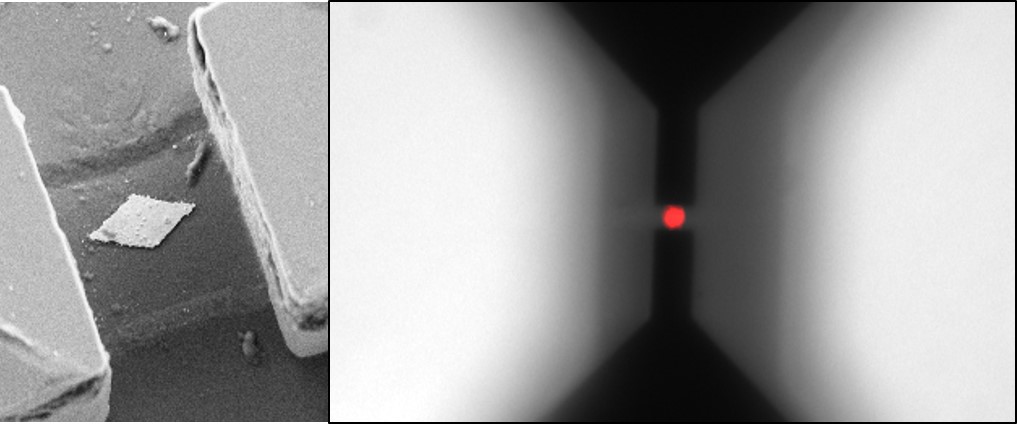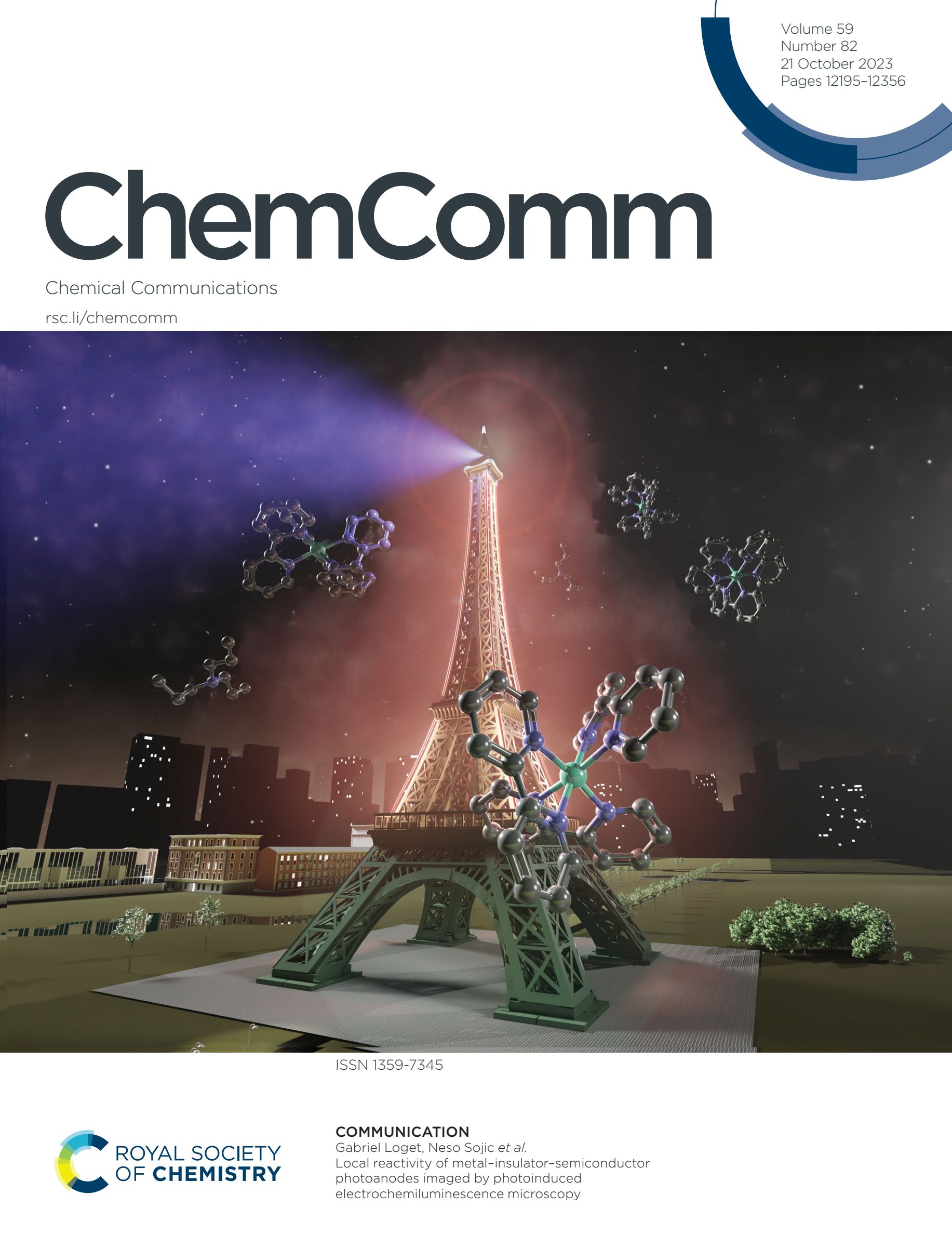S. Voci, A. Ismail, P. Pham, J. Yu, A. Maziz, F. Mesnilgrente, L. Reynaud, T. Livache, P. Mailley, A. Buhot, T. Leichle, A. Kuhn, L. Leroy, A. Bouchet-Spinelli, N. Sojic
J. Electrochem. Soc., 167, 2020, 137509
The combination of bipolar electrochemistry (BE), as a wireless electrochemical approach, and of electrochemiluminescence (ECL) as an imaging readout is a successful strategy with a wide range of analytical applications. However, small conductive entities such as micrometric and nanometric objects are particularly difficult to polarize by BE since they require extremely high electric fields. In order to circumvent this issue due to intrinsic limitations of BE, we elaborated a solid-state micropore, decorated with a rhombus-shaped gold microelectrode. The electric field strength was concentrated inside the solid-state micropore where the conductive gold microelectrode was precisely located and acted as a bipolar light-emitting device. This original configuration allowed achieving adequate polarization of the gold microelectrode in a wireless manner, which led locally to ECL emission. ECL imaging shows that light was generated by the bipolar microelectrode in the center of the micropore. ECL emission could be achieved by imposing a potential value (10 V) to the feeder electrodes that is more than 2 orders of magnitude lower than those required without the micropore. The reported ECL approach opens exciting perspectives for the development of original wireless bioanalytical applications and dynamic bipolar experiments with small objects passing through the pores.







